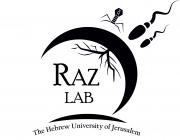Citation:
Abstract:
In many countries sows are kept in individual stalls from insemination up to just few days prior to farrowing. The overall objective of this study was to examine group housing management system for sows during gestation as an alternative for individual confinement stalls, and the possible effects on their welfare, production and reproduction performances. Accordingly, the study included three specific objectives: (1) to compare parameters of production, reproduction, and welfare of sows housed in groups (either 30 or 7 sows/group; Large Group: LG, Small Group: SG, respectively) during gestation as compared to individual confinement stalls (IS); (2) to compare saliva cortisol of pregnant sows throughout gestation, when housed in groups of three different sizes (either 7, 15 or 30 sows per pen group); and (3) to compare sows' production and reproduction performances at the herd level, before, during and after practically transforming from a management of individual confinement stalls to a group housing system, in a large commercial swine farm over a six-year period. Mean cycle length (weaning-to-weaning) was shorter in group housing management as compared to individual stalls (P = 0.0110), but gestation length did not differ among the three groups. Overall farrowing rate (sows farrowed out of those inseminated) was higher (P ≤ 0.0134) for sows housed in groups (either SG or LG). Furthermore, there was a tendency towards a higher number of total born (P = 0.1033), and born alive piglets (P = 0.0862), in group housing system as compared to individual housing management; however, it did not differ between the LG and SG groups. Injuries and lameness index (ILI) of sows improved significantly over the gestation period in group housing management. Group saliva cortisol during gestation did not differ significantly among groups of 7, 15, or 30 sows, except on the first saliva sampling, just after sows were mixed into groups, where cortisol level was significantly higher in sows housed in a pen of 30 sows. Production and reproduction performances at the herd level, over a 6-years period- before, during and after transforming to a group housing system, improved significantly: shortened cycle length, increased farrowing rate, and increased number of total born and born alive piglets. In conclusion, group housing management during gestation was associated with better reproduction, productivity and welfare of sows, as compared to individual stalls. A welfare friendly housing system can be beneficial and effective for both the farmers and the animals.

